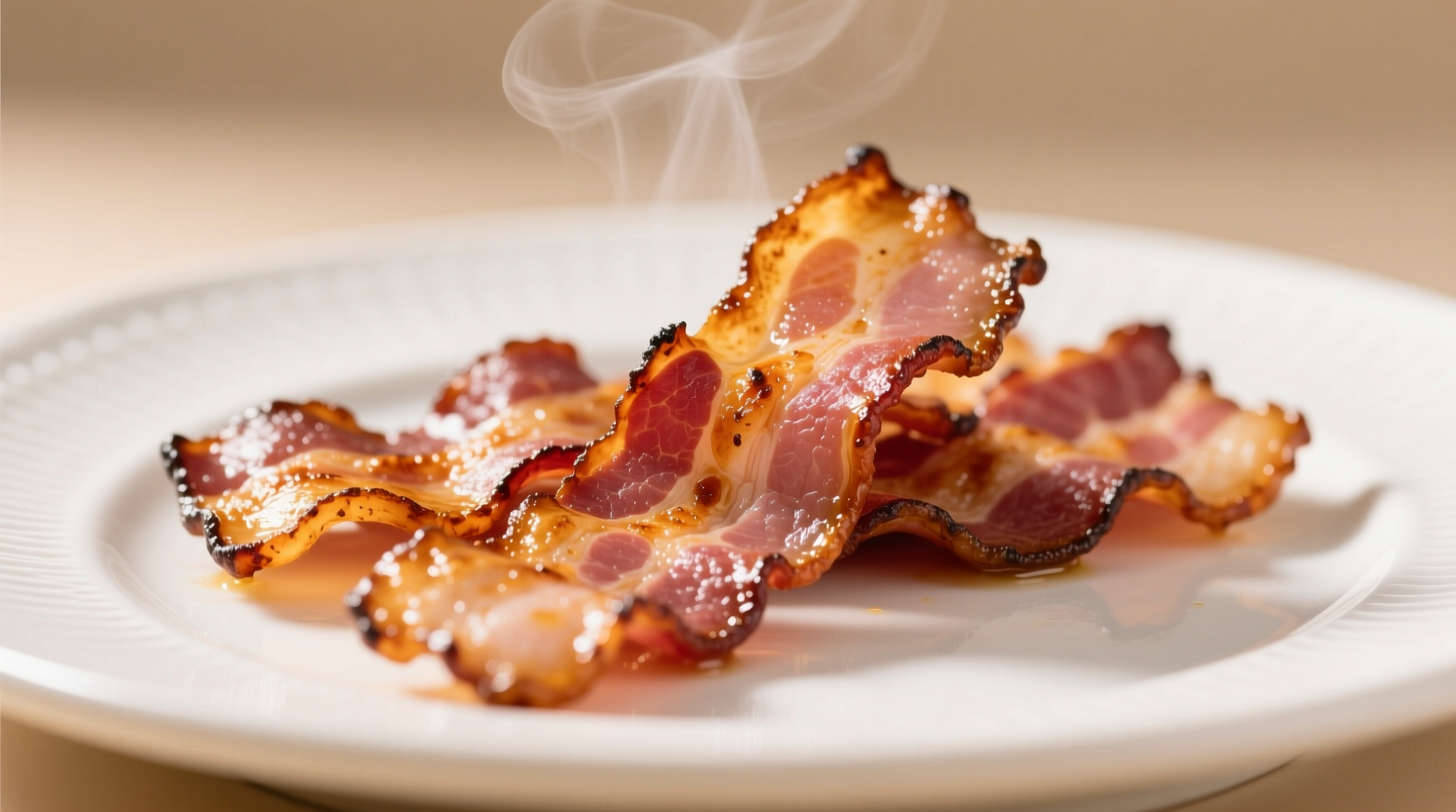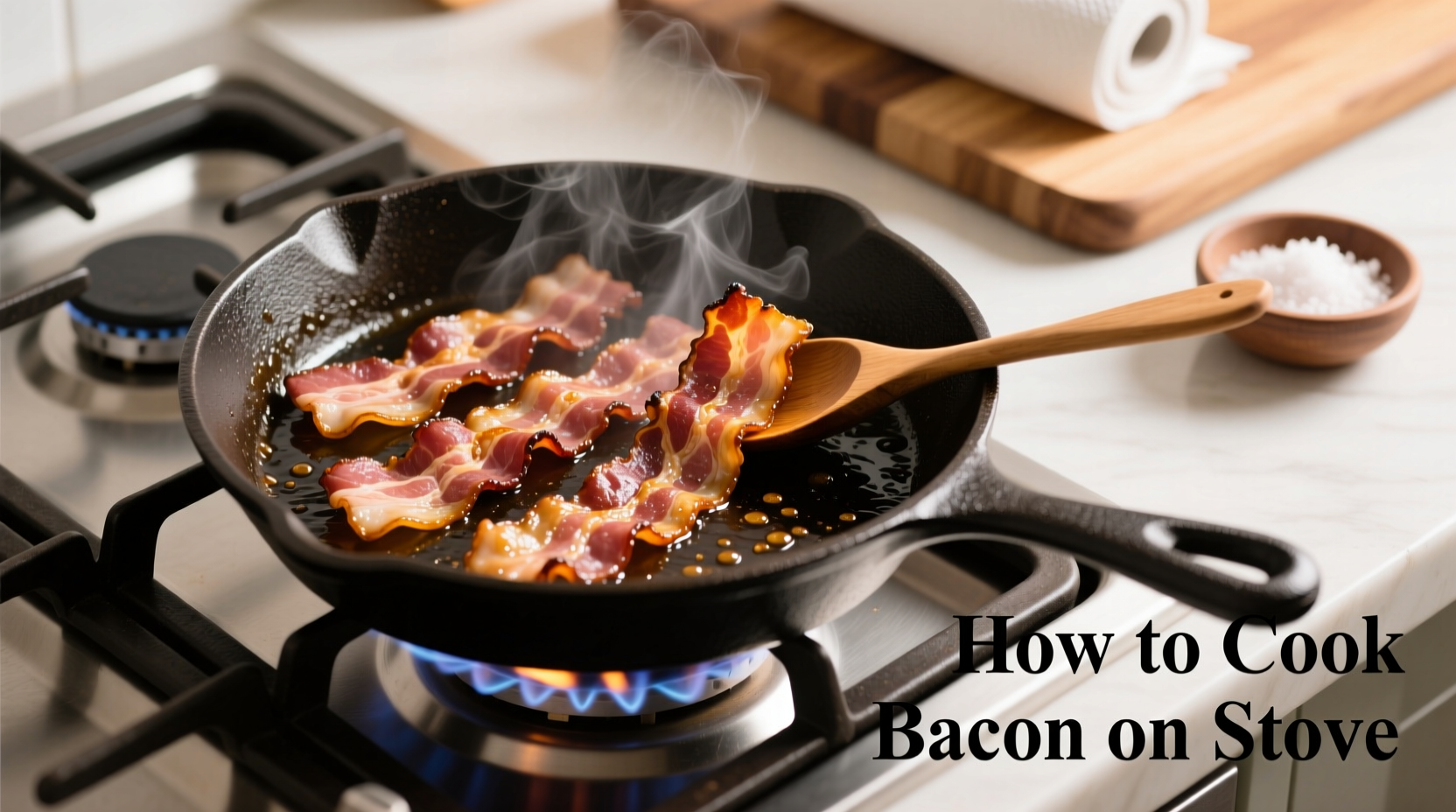Why Stovetop Bacon Reigns Supreme for Home Cooks
While oven-baked bacon has gained popularity, the traditional stovetop method remains the gold standard for most home kitchens. According to the USDA Food Safety and Inspection Service, cooking bacon on the stove provides superior temperature control, allowing you to achieve your preferred crispiness level while ensuring food safety. Unlike oven methods that require preheating and can create uneven results, stovetop cooking delivers consistent, restaurant-quality bacon with minimal equipment.
Your Complete Stovetop Bacon Toolkit
Before you begin, gather these essential items to ensure success:
- Heavy-bottomed skillet (cast iron or stainless steel works best)
- Metal tongs for safe flipping
- Slotted spatula for grease management
- Wire rack placed over paper towels (for perfect drainage)
- Heat-resistant container for grease disposal
| Cooking Method | Time Required | Crispiness Control | Cleanup Difficulty |
|---|---|---|---|
| Stovetop | 10-15 minutes | Excellent | Medium |
| Oven | 15-25 minutes | Good | Low |
| Microwave | 5-8 minutes | Poor | High |
The Step-by-Step Stovetop Bacon Method
Preparation: Setting Up for Success
Remove bacon from refrigeration 10 minutes before cooking. This slight temperature adjustment helps the fat render more evenly. Arrange bacon strips in your cold skillet without overlapping—this prevents uneven cooking. For thicker cuts, consider making small cuts in the fatty edges to prevent curling.
Cooking Process: The Perfect Temperature Dance
Place your skillet with uncooked bacon over medium-low heat—never start with a hot pan. This gradual temperature increase allows fat to render slowly, preventing burning while ensuring thorough cooking. After 3-4 minutes, flip strips using metal tongs. Continue cooking 2-3 minutes per side, adjusting heat if necessary to maintain gentle sizzling without smoking.

As bacon cooks, periodically tilt the pan and use a slotted spatula to remove excess grease into your heat-resistant container. This prevents splattering and maintains optimal cooking temperature. For extra-crispy results, increase heat slightly during the final minute of cooking.
Finishing Touches: Draining and Serving
Transfer cooked bacon to your wire rack setup—never drain directly on paper towels as this traps steam and creates soggy spots. Let rest 1-2 minutes before serving. For meal prep, store cooled bacon in an airtight container in the refrigerator for up to 5 days, reheating in a 350°F oven for best results.
Troubleshooting Common Stovetop Bacon Problems
When Bacon Sticks to the Pan
This typically happens when the heat is too high initially. The Culinary Institute of America recommends starting with cold bacon in a cold pan to allow gradual fat rendering. If sticking occurs, gently loosen with your spatula but avoid forcing it—wait until the fat has rendered sufficiently.
Managing Smoke and Splatter
Excessive smoke indicates your heat is too high. The American Heart Association notes that overheating animal fats can create harmful compounds. Maintain medium-low heat and consider using a splatter screen. If smoke becomes problematic, temporarily reduce heat or open windows.
Pro Tips for Next-Level Stovetop Bacon
- Thickness matters: Thick-cut bacon requires 2-3 extra minutes per side
- Flavor enhancement: Sprinkle black pepper during the last minute of cooking
- Grease preservation: Strain and store cooled bacon grease for frying eggs or potatoes
- Batch cooking: Cook multiple batches without washing the pan—just wipe excess charred bits
When Stovetop Isn't the Best Option
While stovetop excels for small batches (4-8 slices), the USDA recommends oven baking for larger quantities as it provides more even cooking with less hands-on time. Stovetop method also requires more active monitoring than oven methods, making it less ideal when you need to prepare multiple breakfast components simultaneously.











 浙公网安备
33010002000092号
浙公网安备
33010002000092号 浙B2-20120091-4
浙B2-20120091-4